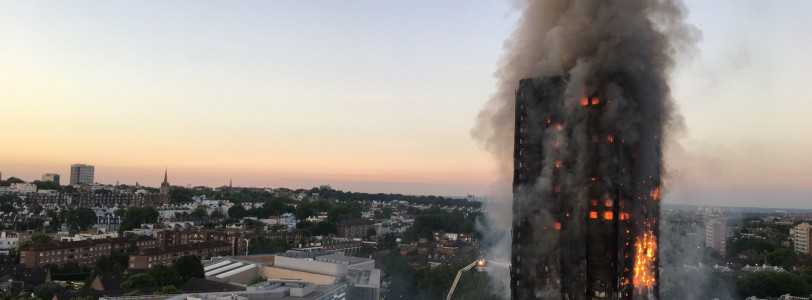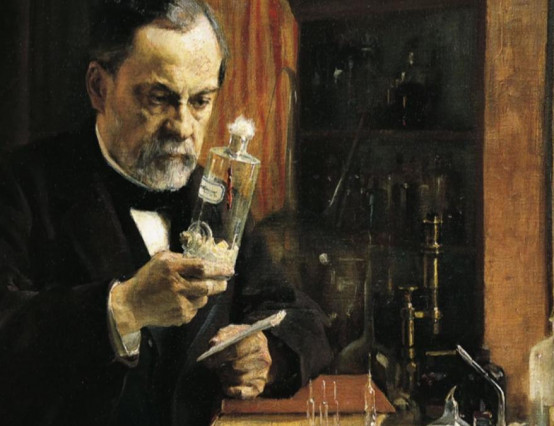The 14th of June marked 3 years since the Grenfell Tower block of flats, a 24-storey building, in North Kensington went up in flames costing the lives of 72 people and the homes of countless families. Grenfell was the deadliest structural fire in the UK’s history since the 1988 Piper Alpha disaster and the worst UK residential fire since World War Two. The fire was started by a malfunctioning fridge-freezer on the fourth floor, with the flames spreading rapidly up the building’s exterior - bringing fire and smoke to all residential floors. It was subsequently found that the rapidity of the flame was due to the building’s cladding, the external insulation and the air gap between which enabled the stack effect. Grenfell had a “stay-put” fire policy - the building design would contain a fire in a single flat for as long as it took the fire crew to respond, but this failed. The Tower burnt for 60 hours before it was put out with 250 London Fire Brigade firefighters and 70 fire engines. The most damning part of this already tragic event: it could have been easily prevented.
The Public Inquiry hearing opened on the 14th of September 2017. It found that Grenfell had been renovated before the fire, and the most significant part of this renovation was the addition of external cladding. This consisted of aluminium sheets bonded to a central of plastic (polyethylene) core. In his report to the inquiry, Professor Luke Bisby stated that evidence “strongly supports” the theory that polyethylene material in the cladding was the primary cause of the spread of the fire. Bisby commented that the cladding used a “highly combustible polyethylene polymer filler which melts, drips, and flows at elevated temperature.” But the new cladding wasn’t the only issue. Bisby suggested that vertical cavities within the cladding played a role in the spread of the fire, as did the insulation. A number of other flammable materials, including a polyurethane polymer foam insulation board which pre-dated the renovation were also present, and fire expert Dr Barbara Lane identified combustible materials used in the refurbishment of the tower’s windows as another factor in allowing the spread of the fire. The inquiry found also that the fire alarms were defective and elevators were unfit for evacuative measures. The £8.6 million refurbishment carried out by Rydon Construction in May of 2016, in cooperation with Kensington and Chelsea Tenant Management Organisation (KCTMO - who managed the tower on behalf of the council), had cut corners. Documents obtained by the BBC showed that the cladding fitted to the Tower during its refurbishment was changed to a more flammable version. But why? Why would they decide to intentionally and knowingly use defective, combustible material that could and did lead to many fatalities? Simply, it was cheaper. The new cladding was far cheaper than the initial zinc cladding - saving £300,000,but killing 72 people.
‘Neoliberalism’ is the idea that the government should step away from the market and only craft policies that allow the free flow of goods and protect corporate interests. Neoliberalism breeds a ‘Politics of disposability’, the working class are merely a superfluous tool used for the preservation of corporate interests and the the upper class elite. Philosophers Brad Evans and Henry Giroux argued that people become disposable under an economic system that is characterized by privatization of things like healthcare, the deregulation of banks, and the erosure of government safety nets like social security and welfare (all ideas that have been floating around the Tory government for decades), and especially in the case of Grenfell: social housing. This idea of disposability is by no means a new concept, having found its formation in Reverend Thomas Malthus’ 1798 ‘Essay on the Principle of Population’. In it Malthus argues that because production wouldn’t be able to keep up with demand, a growing population would create massive food shortages. The solution: employ laws that keep birthrates low and death rates high (i.e. famine, diseases and wars). We cannot exist, at least in Malthus’ view, in a world where everyone has everything he needs because demand is constantly growing with a growing population and supply simply cannot match it. However, Malthus was rebuked by Friedrich Engels (a famous collaborator of Karl Marx) who claimed Malthus misjudged the issue; it wasn’t an increasing population, but an economic system that doesn’t value workers that was the problem. Malthus’ model was putting economics above people and in Engels’ opinion was simply an excuse for the rich elite to mistreat the poor.
This is what we can see in the case of Grenfell. Kensington is a Conservative led Royal Borough and is the most affluent borough in the country, containing many of the most expensive residential properties in the world. But it is also the smallest borough in London and the second smallest district in England; it is one of the most densely populated administrative regions in the UK. The 2012 national planning policy framework has given precedence to expensive private development while discouraging social housing. Among the 72 Conservative MP landlords who voted against the 2016 housing bill to make “rented properties fit for human habitation” was former Prime Minister David Cameron, and Brandon Lewis who has also said installing fire sprinklers could discourage house building. Simply put, those 72 lives and indeed all who lived in the Tower but who survived, were considered disposable to the State, and those in social housing to this day are still held in such low regard by our current government. It appears that the Tower was burnt, that people lost their homes, that innocent people lost their lives and loved ones, simply because the council members of the borough (and more generally the Tory government) find social housing and those residing within it disgusting and so went about a social cleansing of the borough so that the rich citizens of Kensington wouldn’t have to rub shoulders with the ‘poor’ tenants of social housing, so to speak. Take Jacob Reese-Mogg’s comments on Grenfell as proof of this idea, where he essentially claimed the victims of the fire were idiots, “And I think if either of us were in a fire, whatever the fire brigade said, we would leave the burning building. It just seems the common sense thing to do”. Clearly the Leader of the Commons has never resided in a 24-storey tower block, let alone one that is on fire.
The “stay-put” policy had already come into question after the Lakanal House Fire in 2009. The Lakanal coroner’s inquest provided several opportunities to change the system before the tragedy at Grenfell. During the Lakanal fire, a resident had called 999 to ask whether she should stay within her home, to which the emergency services advised her, almost like a mantra, to “stay-put”. That was the wrong advice, the fire, much like Grenfell, did not remain in one apartment, and that woman burnt in her home. After the inquiry, all fire authorities were officially advised to train key staff to determine when they should abandon the “stay-put” policy for residents in burning tower blocks, three years before Grenfell. However, the quality of this training has come under scrutiny amid claims that senior-firefighters were ill-prepared for Grenfell. Guidelines for when incident commanders should change from ordering residents to stay put to evacuate were issued in 2014, in direct response to the recommendations of the coroner of the Lakanal inquest.
Unfortunately this issue is not just one that is rife in the government, those elected individuals who are set to lead the country and tasked with making decisions in the best interest of the State, but to charities, groups who see the clear inequalities and maladies of society and wish to set them right themselves. The main example of this was Shelter - and if the irony of a charity set to helping the homeless, assisting in the destruction of peoples’ homes doesn’t shock you, nothing will. The former Chairman of Shelter, Sir Derek Myers, was also the former chief executive of Kensington and Chelsea council (as well as Hammersmith and Fulham),while Shelter trustee and member of the board, Tony Rice, is chairman of Xerxes Equity, the sole shareholder in Omnis Exteriors - the company that sold the cladding used in the tower. Both immediately resigned from their positions in Shelter when Grenfell occurred. In a Guardian interview, while he was head of the Royal Borough of Kensington and Chelsea, Myers downplayed the council’s policy of negotiating the purchase of properties in Peterborough and then relocating local families there. In response, Peterborough’s then Conservative MP Stewart Jackson condemned this policy and said, “This is about social cleansing in Kensington and Chelsea. It’s about getting rid of people they don’t want in their borough who are on benefits, who they have responsibility for - to house - who are statutorily homeless.” Important to note is that during Myers’ time as chief executive of RBKC (Royal Borough of Kensington and Chelsea) the Notting Barns South Masterplan, which proposed the demolition of Grenfell Tower, was drawn up. Myers’ and the council had intended to demolish the Tower, and when their scheme was blocked, they carried out a renovation that led to it burning to the ground, with its occupants inside. So after yielding his position in the council, and then in Shelter, you would think Myers’ career would be in ruins and the man would not be able to find any further work. Alas he was then appointed to the board of Public Health England.
Back in October of 2018, it came out that Public Health England had not acted upon a report of early findings by toxicology expert Dr Anna Stec showing huge concentrations of potential carcinogens in the air and soil around Grenfell. Indeed, Dr Stec’s findings supported the anxiety of North Kensington residents, whose concerns seemingly fell on deaf ears of the government, Public Health England and the council. Public Health England were delayed in their responses, relied on air quality tests alone (again ignoring resident’s concerns) and flat-out refused to investigate the rest of the environment surrounding Grenfell. Many concerned local residents at public meetings were dismissed by Public Health England, totally ignoring the research of scientific experts. It is unfortunate that after Myers’ role in the initial event, he is now involved in the gaslighting of concerned North Kensington citizens and scientists.
But let us take a moment to actually analyse who those 72 people were, they were probably the most accurate reflection of modern Britain: young families scrambling for childcare cover and extra jobs to help pay the bills; people still living with parents well into their 20s and 30s; refugees who abandoned careers and status in perilous homelands; the very elderly - seven of the 72 were over 70 years old - grappling with disabilities in a crowded health system. It is interesting then that seven of the victims were white Britons, this disaster disproportionately affected minority ethnic communities. A fire does not discriminate, it burns and scorches anything in its path. But by not putting in sufficient preventative and safety measures, this government did discriminate, it decided that these individuals were disposable, that 18 children could be burnt to death, that an unborn child could be torched in its mother’s womb, that the lives of those in social housing, and specifically from minority ethnic backgrounds, were not worthy of living. So while the fire that may have sparked Grenfell originated from a defective fridge, the flames that engulfed the block and claimed the lives of 72 people came from a government and economic system that despises the working man.
So three years later, what’s changed? Have those 72 victims gotten justice? What were the results of the inquiry? Well firstly some of those who lost their homes in the fire still remain unhoused, now experiencing lockdown and the global pandemic in dangerous ‘homes’ if indeed they can be called such. The public inquiry has not yet delivered justice, and the promise to give social housing residents a bigger voice has been broken. The government has still not passed a single piece of primary legislation on building safety. The worst part of the aftermath: it can happen again, in fact, it is very likely to. Last year there were major fires from Barking to Greater Manchester, and in response the government published a new deadline for all Grenfell-style cladding’s removal, June 2020. Yet official figures revealed that 300 buildings are still wrapped in the lethal Polyethylene cladding, and Labour stats suggest that 56,000 people are unknowingly living in another Grenfell, another death-trap, and it would be safe to assume that not one of those people resides in an expensive privately developed flat in Kensington. Three years on and there is no justice, three years on and the government remains silent, remains inactive, allows people to burn, and to an extent allowing them to burn, is as bad as burning them yourself.
But the British Government might actually be in hotter water than you may expect, as the United Nations warned Britain that its failure to strip combustible cladding from high-rise buildings containing tens of thousands of homes may be a breach of international law. The UN is demanding answers about the UK government’s delayed programme to fix hundreds of blocks wrapped in flammable panels and without other fire safety precautions. Specifically the UN’s former special rapporteur on adequate housing, Leilani Farha, wrote to the government to express, “serious concern about allegations of multiple violations of human rights to adequate housing, of which safety is a key component - contrary to international human rights laws.” The UN is warning the UK may have breached the international covenant on economic, social and cultural rights, which includes the “right of everyone to an adequate standard of living for himself and his family, including adequate food, clothing and housing.” Housing should be habitable “with adequate space and protecting them from cold, damp, rain, heat, wind or other threats to health”. States that ratified this covenant, such as the UK in 1976, must show that “every effort has been made to use a maximum of available resources in an effort to discharge their obligations.” It has since emerged that the government has spent less than a quarter of what it promised to replace dangerous cladding.
Ministers pledged £400 million in May 2018 to strip social housing towers of aluminium composite material panels. But only £133 million has been spent, a National Audit Office report found. Of a further £200 million earmarked in May 2019 to fix private blocks, only £1.4 million has been spent. Nine out of ten of 550 leaseholders and tenants surveyed by campaigners at the UK Cladding Action Group said their mental health had deteriorated as a result of fire safety problems. Nearly a quarter reported suicidal feelings or considered self-harm as a result of their predicament, which has left apartments unsellable and owners facing crippling bills. So where did all that money go? Why are those in social housing and the victims of Grenfell yet to receive justice when the government clearly has a surplus of funding that has mysteriously disappeared? In the words of Ritapurna Saha, co-founder of UK Cladding Action Group and a resident of Northpoint tower in Bromley, “As we are seeing time and time again, fire does not wait, and neither should the government.”
That is not to say that nobody is pushing for justice. Grenfell United consists of survivors and bereaved family members of the Grenfell Tower fire, who work together for their community. Grenfell United are campaigning for safe homes, justice, and change. On the three years since the fire, they carried out a remembrance service. At 6pm there was an online remembrance event with bells ringing in commemoration of the 72 victims, a multi-faith vigil and reflections from the community. From 10:30pm they carried out ‘Go Green for Grenfell’ to show the nation that the community is still united for change and justice and asked people to illuminate their homes green. Prime Minister Johnson issued a video message on the 14th to those affected by Grenfell, promising to make sure what happened never happens again, and that the government is working to implement the recommendations of the first phase of the public inquiry into the disaster (the second phase of the inquiry was paused in March due to the Pandemic and is set to continue on July 6). However, Prime Minister Johnson’s ‘promises’ mean literally nothing, he is a notorious liar. Johnson was sacked from The Times over allegations he fabricated a quote from his Godfather, he was also sacked from The Daily Telegraph for reporting Fake News from Brussels, he lied about the people of Liverpool’s involvement in the Hillsborough disaster, is known for his extramarital affairs, broke many promises as Mayor of London (as well as lying outright during the Brexit Campaign), and the list unfortunately goes on. The duplicitous nature of this Etonian is not news by any means, he even said himself that his mistakes, “are too numerous to list in full”, so any promise of the victims of Grenfell getting justice is void. Apparently if you spray graffiti on a statue you may be jailed for a decade, but if you install flammable cladding around peoples homes and 72 of them burn to death as a result, nothing happens. Spray paint washes off in moments, the life of 72 people can not be brought back.
The Grenfell tragedy is inextricably linked with Capitalism and it’s intrinsic flaws, as Engels’ remarked of Malthus’ model, money over man. Scholar Mark Fischer posited the idea of ‘Capitalist Realism’, in his words it is “The widespread sense that not only is capitalism the only viable political and economic system, but also that it is now impossible even to imagine a coherent alternative to it.” Essentially, it is easier to imagine the literal apocalypse than the end of capitalism. There is no escaping our relentless adherence to capitalism no matter how brutal the effects might be, no matter how many people have to die or burn. In capitalism, inequality is necessary for the economy to persist, any tweakings of the free market would cause famine. Capitalist realism argues that any problem can be solved by the market, much as economists have long championed the simple beauty of the law of supply and demand for distributing resources.
But why? Fischer argues that there is no escape from Capitalism, so how has our society been hammered into this system where people are exploited for the benefit of the 1%? Max Weber’s ‘The Protestant Ethic and Spirit of Capitalism’ 1904, argues that workers are not simply alienated, they are subject to a process that strips them of their very humanity. In Weber’s opinion, Capitalism is an iron cage that exposes workers to in-compensating anxiety, all for the accumulation of profit. ‘The Protestant Ethic and Spirit of Capitalism’ is Weber’s attempt to discover the ways Capitalism grew from a specific set of beliefs, namely Calvinism. The titular ‘Protestant Ethic’ is the calling to work as a way of showing glory to God. The Calvinist isn’t just called to work, but pressured via the fear of eternal damnation. Beset by the expectations of a boss, working to a deadline, aching to make ends meet, struggling for everyday salvation, Capitalism creates anxiety in its own right. But in order to secure salvation the Calvinists worked endlessly and tiredly, without lavish possessions, for their very salvation. Of course, our society does not still run on Calvinism or the Protestant Ethic, but there is a modern equivalent - work hard and you will be rewarded in this life. Where the Calvinists were promised reward in the next life, the workers of today are duped into believing that hard work will lead to promotions, and social/upward mobility. We no longer work out of fear of Hell, but out of longing for eternal reward and survival. Capitalism’s longevity comes from its ability to adapt to changes in society, religion was used to create a salvation anxious workforce who wouldn’t stop working for fear of not getting into heaven, while today’s workforce is told they can climb up the social ladder if they work hard enough, and, save for very few cases, that is a lie. Protestantism haunts modern Capitalism, but if God supposedly helps those who helps themselves, who does modern day Capitalism help? Well it clearly wasn’t the 72 victims of Grenfell, who included taxi drivers, soldiers, teachers, hairdressers, all people who worked hard within the Capitalist system, and what did they get as reward? They were burnt alive in places they should have been safest. If one wishes to answer the question, ‘who does modern day Capitalism help?’, it is the rich, the 1%, the elites, the Johnsons, the Reese-Moggs, the Camerons of the world. In fact, the Calvinist ideal is not so different to modern day capitalism - if you don’t work hard enough in the view of your overlords you’ll be set ablaze, one takes place in Hell, the other in a Social Housing Tower Block in North Kensington.
Linked to this is German Philosopher Georg Simmel’s argument that money doesn’t stop at economic liberation. When money becomes symbolic of all value it allows anything to be exchanged for anything else, until everything has a price, including human life, where 72 lives are equivalent to £300,000. Everything can be bought: experiences, friends, armies, governments, even romance. Money erodes the social relations that used to dictate behaviour, like community, religion, or family, and put in its place the laws of exchange. We are left in a world that encourages us to put opportunity over human life - seemingly echoed in Myers’ aforementioned Guardian interview, “like all natural leaders, where others see a problem, Myers sees an opportunity.”
Running parallel to this is Subhabrata Bobby Banerjee’s Necrocapitalism: the practices of organisational accumulation (i.e. gaining wealth) that involve violence, dispossession of property, and death. In order for this system to work government’s must create certain ‘spaces of exception’ - where individuals do not possess rights. Essentially, Banerjee’s argument boils down to the claim that aspects of our economy are geared to profit off death and suffering.
But then say we were to combine the principles of Fisher’s Capitalist Realism with Banerjee’s Necrocapitalism, we would have what Gerry Canavan called ‘Necrofuturism’: taking the economics of death and projecting it into the future as the only viable outcome. Canavan explains, “Those capitalist-realists anticipations of the coming decades that anticipate the future as a devastated world of death” are exactly what Necrofuturism is, “Necrofuturism posits a future that is doomed to continue modern capitalism’s unsustainable and immoral practices even as those practices become more and more destructive and self-defeating.” Such a vision is the dominant modern projection of the future (look at the majority of films for evidence), and with the advent of AI and robotics that can complete and carry out most jobs, the human is now a disposable tool, it has no value. In its simplest terms, Necrofuturism states that capitalism is stupendously enduring, even when it leads to rampant death and destruction. If capitalism and the control and death it enforces are necessary, it is only because someone designed it to be so. There is no better world within the capitalist regime, the only solution is total revolution, tearing it down entirely in hopes that something new might spring from it. A world where if 72 people burn in their homes, countless people lose their houses, and thousands of others unknowingly reside in deathtraps that could combust at any moment, simply because it profits the ruling elite, they WILL get justice.









0 Comments